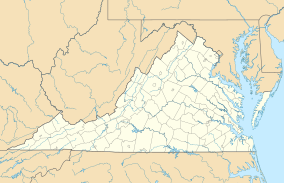| Deep Run Ponds Natural Area Preserve | |
|---|---|
| Location | Rockingham County, Virginia |
| Nearest city | Port Republic |
| Coordinates | 38°16′33″N 78°46′36″W / 38.2757°N 78.7768°W[1] |
| Area | 907 acres (3.67 km2) |
| Governing body | Virginia Department of Conservation and Recreation |
Deep Run Ponds Natural Area Preserve is a 907-acre (3.67 km2) Natural Area Preserve in Rockingham County, Virginia. The preserve contains one of the largest remaining systems of Shenandoah Valley sinkhole ponds in Virginia. Such ponds are found in Rockingham and Augusta counties; their water levels fluctuate throughout the year. The preserve's eight sinkhole ponds support a variety of rare plant and animal life; two ponds support the rare Virginia sneezeweed (Helenium virginicum), while others contain black-fruited spikerush (Eleocharis melanocarpa), northern St. John's-wort (Hypericum boreale), Buxbaum's sedge (Carex buxbaumi), and northern bog clubmoss (Lycopodiella inundata).[2]
The preserve is owned and maintained by the Virginia Department of Conservation and Recreation. It does not include improvements for public access, and visitors must make arrangements with a state-employed land steward prior to visiting.[2]
See also
[edit]References
[edit]- ^ "Deep Run Ponds State Nature Preserve". ProtectedPlanet. United Nations Environment Programme's World Conservation Monitoring Centre. Archived from the original on March 30, 2012. Retrieved December 17, 2016.
- ^ a b "Deep Run Ponds Natural Area Preserve". Virginia Department of Conservation and Recreation. Retrieved February 18, 2024.
External links
[edit]

Well, that’s interesting to know that Psilotum nudum are known as whisk ferns. Psilotum nudum is the commoner species of the two. While the P. flaccidum is a rare species and is found in the tropical islands. Both the species are usually epiphytic in habit and grow upon tree ferns. These species may also be terrestrial and grow in humus or in the crevices of the rocks.
View the detailed Guide of Psilotum nudum: Detailed Study Of Psilotum Nudum (Whisk Fern), Classification, Anatomy, Reproduction